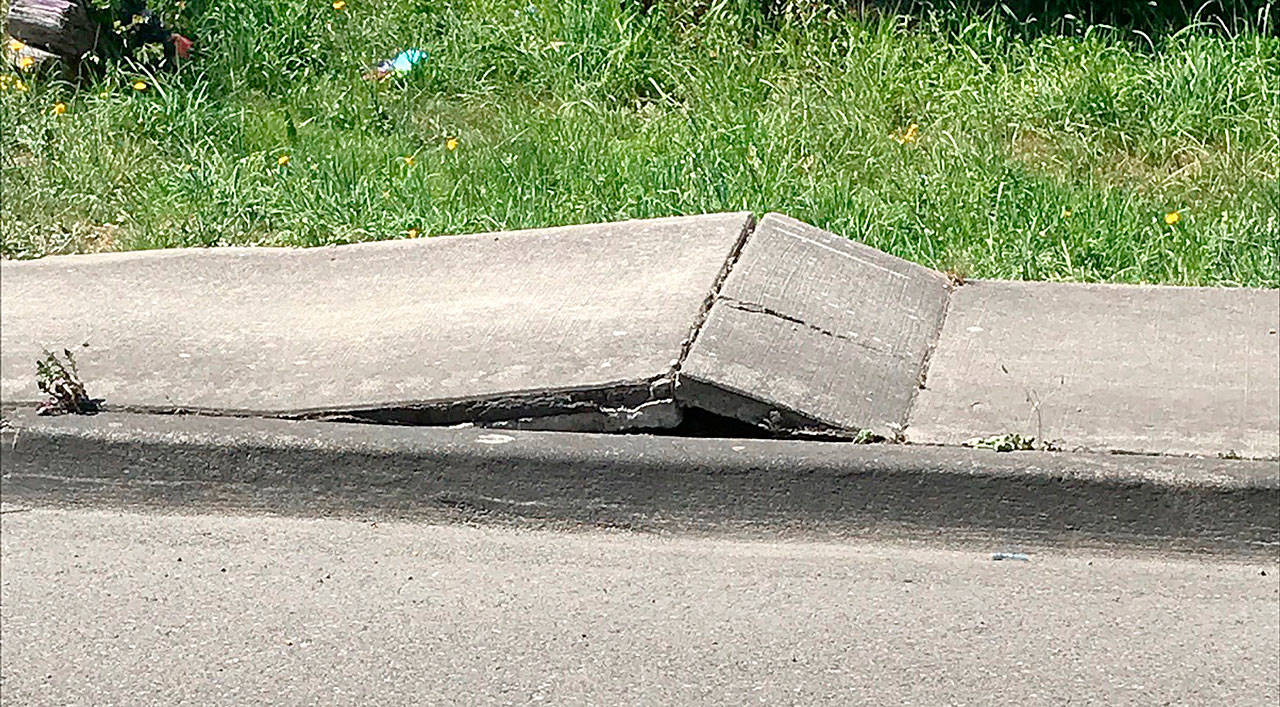Temperatures in late June that killed 112 people were also hot enough to melt roads and buckle sidewalks, causing millions of dollars worth of damage and needed repairs across the state.
The historic heat, generally attributed to climate change, affected roads and other right-of-way infrastructure in 18 counties, including Snohomish and prompted Gov. Jay Inslee to declare a state of emergency.
The Washington State Department of Transportation estimates over $2.6 million in expenses for highways and interstates the agency manages. Government staff have over a year to submit funding requests.
Physics was the culprit. As something heats, it expands. But concrete in roads, generally hotter than recorded air temperature, can only expand so much before the pressure overwhelms expansion joints. For a surface like asphalt, the mixture can start to liquefy in sustained high temperatures.
“One of the reasons we experienced the problem we did is there was very little cooling at night for the concrete panels, causing them to continue to absorb heat and be prone to damage from expansion,” WSDOT spokesman Jordan Longacre said in an email. “Concrete panels in our state are poured in cooler temperatures, so when temperature rises they tend to expand even more than a panel that is poured in warmer temperatures. This region experiences more significant temperature swings with thawing and freezing than other regions such as California and Arizona.”
While I-5 and other major highways in Snohomish County were spared the pavement problems that afflicted other areas, including King County, some of its roads struggled.
Around Snohomish County, road issues caused by the 100-degree heat were estimated to cost $191,000, Public Works staff said. Problems occurred on the Mountain Loop Highway near Granite Falls, Old Highway 99 near Silvana, Machias Road near Snohomish, and Marine Drive in Tulalip.
The temperatures partially liquefied asphalt on sections of Machias Road and the Mountain Loop Highway, causing the layers of asphalt and chip-seal overlay to separate.
“Heavy truck traffic can add stress and accelerate the damage,” Snohomish County road maintenance director Jim Parker said in an email. “A road in this state will often have a ‘wet’ or ‘shiny’ appearance, and parts of the surface layer may crack or come apart. In some rare circumstances and extreme heat the asphalt may become “sticky” and adhere to vehicle tires, causing potholes or a rough driving surface.”
The remedy was water-cooled sand which acted as a binder and made the surface firm again.
The Mountain Loop Highway had the most heat-related damage with an estimated repair cost of $75,000. The affected road surfaces in those areas were repaved, Parker said.
Machias Road’s repairs were estimated at $25,000.
A section of pavement along the 27400 block of Old Highway 99 N., north of Silvana, heaved up, cracking the asphalt and making a bump in the road. That cost was projected to be $15,000.
Sidewalk repairs for similar problems along Marine Drive NE in Tulalip were found in over 20 locations. Those repairs were estimated to cost $76,000.
“Pavement heave or buckles can occur when the air temperatures change from moderate to extreme,” Parker said. “Heated materials beneath the pavement can swell and push the asphalt surface upward, creating a bump and usually cracks in the road surface. Concrete expands when heated. Although walkways have expansion joints to account for this expansion, extreme heat can cause walkway panels to push into each other. This can result in cracks along the panels or a lifting or ‘buckling’ at the panel joints.”
In Granite Falls, where temperatures were higher than seaside areas of the county, only a small section of sidewalk in the 900 block of Galena Street buckled under the heat, city public works operations supervisor Charles White said in an email. The city has funds for those repairs.
Everett Public Works staff did not have any reports of problems, spokesperson Kathleen Baxter said in an email.
“As always, we appreciate the community letting us know if they find conditions that need our attention,” Baxter wrote.
Infrastructure’s role in addressing climate change, or at least responding to the effects, is an ongoing political battle, as evident in the protracted congressional debate on a $1 trillion bipartisan deal.
But the tolls are here.
Have a question? Call 425-339-3037 or email streetsmarts@heraldnet.com. Please include your first and last name and city of residence.
Talk to us
> Give us your news tips.
> Send us a letter to the editor.
> More Herald contact information.

























